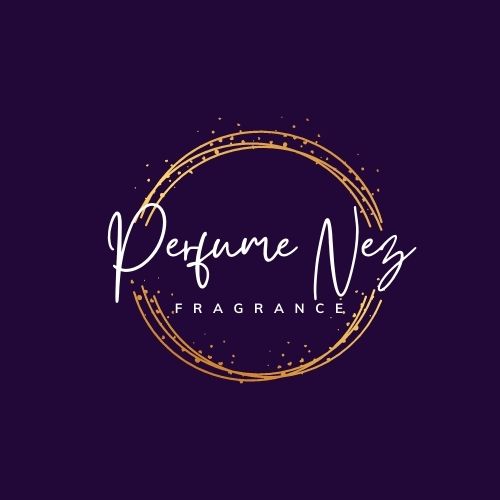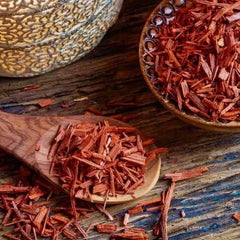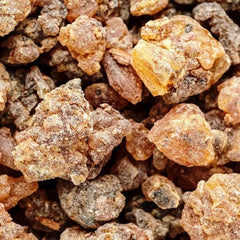What Does Lilac Smell Like?
Click For Affordable Inspired Perfume Alternatives

Embark on a fragrant journey to blooming gardens and explore the enchanting aroma of lilac. Known for its delicate and distinctive fragrance, lilac, scientifically named Syringa, graces the air with floral elegance. Join us as we unravel the question: What does lilac smell like?
What Does Lilac Smell Like?
The fragrance of lilac is a sensory delight, characterized by a sweet and intoxicating floral bouquet. Imagine the ethereal scent of fresh flowers in full bloom, with a delicate sweetness that lingers in the air. Lilac's aroma is a celebration of spring, offering a captivating olfactory experience that captures the essence of flourishing gardens.
Lilac's Floral Symphony
Enter the enchanting world of lilac, where the fragrance is a symphony of delicate florals. Join me on a fragrant journey to discover the captivating aroma that defines the essence of lilac.
Floral Elegance: Blooms in Full Splendor
As you approach lilac, the first olfactory impression is a burst of floral elegance, reminiscent of blossoms in full splendor. Picture the heady fragrance of lilac flowers, delicate yet powerful, creating an atmosphere of natural beauty. Lilac's scent is a celebration of floral grandeur, instantly transporting you to a garden in full bloom with its sweet and alluring character.
Sweet Nectar: Nature's Perfume
The scent of lilac is a sweet embrace of nature's perfume. It captures the essence of blooming flowers releasing their sweet nectar into the air. Lilac's fragrance is a testament to the natural beauty of the blossoms, creating a romantic and captivating olfactory experience that echoes the charm of spring gardens.
Airy Freshness: A Gentle Breeze Through Petals
Lilac's aroma carries an airy freshness, as if a gentle breeze is wafting through delicate petals. The scent is light and uplifting, creating a sense of tranquility and serenity. Lilac's fragrance is an invitation to breathe in the freshness of a spring morning, surrounded by the gentle rustle of blossoms in the wind.
Soft Powdery Notes: A Subtle Sweetness
While predominantly floral, there's a soft undercurrent of powdery sweetness in lilac's scent. This delicate sweetness adds depth to the fragrance, creating a well-balanced composition that is both elegant and subtly sweet. Lilac's aroma is a delightful interplay of floral elegance and powdery softness, reminiscent of a bouquet's gentle embrace.
Lilac's Floral Waltz
Hence, lilac's fragrance is a floral waltz of elegance, sweet nectar, airy freshness, and soft powdery notes. It stands as a testament to the delicate and captivating qualities of this blossoming gem, offering a sensory experience that is both enchanting and delightful. Lilac, with its sweet and alluring aroma, invites us to savor the beauty found within its petals, a fragrant journey that unfolds with every gentle breeze.
Factors Influencing the Scent of Lilac Fragrance Oil
Lilac fragrance oil is a carefully crafted composition designed to capture the sweet and floral aroma of the Syringa genus. The formulation of this fragrance involves a thoughtful combination of aromatic compounds. Here are several factors that contribute to the captivating and sweet scent of lilac fragrance oil:
-
Fragrance Composition: Lilac fragrance oil is a meticulously blended mixture of various aromatic compounds, chosen to replicate the characteristic scent of lilac. This composition may include both synthetic and natural ingredients to achieve the desired olfactory profile.
-
Lilac Essence: At the heart of the fragrance lies the essence of lilac. Notes of sweet florals, with a perfect balance of freshness and softness, are intricately blended to mirror the romantic and captivating aroma of lilac.
-
Synthetic vs. Natural Components: Lilac fragrance oil often combines both synthetic and natural ingredients. Perfumers make choices to strike a balance between authenticity, cost considerations, and sustainability in the selection of these components.
-
Extraction Method: The method used to create lilac fragrance oil, whether through distillation or extraction, plays a crucial role in defining the aromatic profile. Specific extraction methods contribute to the faithful recreation of the fresh and sweet scent.
-
Additional Floral and Sweet Notes in the Blend: The fragrance may incorporate additional floral elements or subtle sweet notes to enhance complexity. These complementary notes contribute to the overall sweetness and elegance of the scent, capturing the essence of lilac.
-
Quality of Ingredients: The quality of raw materials, including the source of essential components, directly influences the sweetness and authenticity of the lilac scent in the fragrance oil.
-
Perfumer's Artistry: The expertise and creativity of the perfumer or fragrance creator are crucial. Perfumers leverage their skills to balance different components, creating a distinctive and delightful lilac fragrance.
-
Regulatory Compliance: Adherence to regulatory standards and restrictions on certain fragrance ingredients is crucial. Compliance with safety guidelines requires careful consideration of ingredient choices to ensure the fragrance is safe for use.
-
Usage in Products: Lilac fragrance oil can be incorporated into various products, including perfumes, candles, room sprays, and bath products. The interaction with other ingredients in specific product formulations can influence how the lilac scent is perceived.
-
Product Type and Concentration: The concentration of lilac fragrance oil in a product affects the strength and longevity of the scent. Higher concentrations may be suitable for perfumes, while lower concentrations work well for candles, soaps, or room sprays.
-
Storage Conditions: Proper storage conditions for lilac fragrance oil, both before and after formulation, are essential to maintain its stability and scent. Storing it in a cool, dark environment helps preserve the freshness of the fragrance.
-
Consumer Preferences and Trends: Formulations of lilac fragrance may adapt to changing consumer preferences and market trends. The popularity of floral scents or unique blends may influence product formulations.
-
Artisanal vs. Commercial Production: Differences between artisanal and commercial production of lilac fragrance oil may impact ingredient sourcing, formulation, and overall quality. Artisanal methods may emphasize craftsmanship and unique blends.
-
Post-Formulation Processing: Additional processes, such as aging or filtering after the formulation of the fragrance oil, may influence the final scent and contribute to the desired characteristics.
Exploring different formulations of Lilac fragrance oil allows consumers to experience a range of sweet and floral scents reminiscent of blooming gardens. Individual preferences play a significant role in selecting the perfect Lilac fragrance for various applications.
What to Look for When Choosing Lilac Fragrance Oil
Selecting a lilac fragrance oil allows you to immerse yourself in the sweet and floral aroma of lilac blossoms. Whether used in candles, diffusers, or personal care products, consider these factors to ensure you choose a high-quality and authentic lilac fragrance oil:
-
Floral Authenticity: Seek a lilac fragrance oil that authentically captures the fresh, sweet, and floral scent of real lilac blossoms. Look for a fragrance that embodies the unique floral notes characteristic of quality lilac.
-
Natural vs. Synthetic: Determine whether the fragrance oil is derived from natural sources or is synthetically produced. Natural lilac oils can provide a more nuanced and realistic scent, closely resembling the aroma of actual lilac blossoms.
-
Blend Ingredients: Check the blend of ingredients in the fragrance oil. A well-crafted combination of natural and synthetic components can contribute to a balanced and long-lasting lilac fragrance.
-
Intensity Level: Consider the intensity level of the lilac fragrance. Some may prefer a subtle and sweet scent, while others may desire a more pronounced and captivating aroma. Look for a fragrance that aligns with your desired level of intensity.
-
Versatility: Choose a fragrance oil that is versatile and suitable for various applications. Whether used in candles, soaps, lotions, or diffusers, versatility allows you to enjoy the sweet and floral scent in different settings.
-
Packaging: Assess the packaging of the fragrance oil. Opt for a bottle that is dark or opaque to protect the oil from light exposure, preserving its freshness and preventing deterioration over time.
-
No Residue or Discoloration: Ensure that the lilac fragrance oil leaves no residue or discoloration when incorporated into different products. A high-quality oil should seamlessly integrate into various mediums without causing unwanted effects.
-
Manufacturer Reputation: Research the reputation of the manufacturer or brand. Choose well-established brands with positive reviews, as they are more likely to produce reliable and high-quality fragrance oils.
-
Testing Options: Look for fragrance oils that offer testing options or sample sizes. This allows you to experience the scent firsthand before committing to a larger quantity, ensuring it aligns with your preferences.
-
Ethical and Sustainable Practices: Consider the manufacturer's commitment to ethical and sustainable practices. Brands that prioritize responsible sourcing and environmentally friendly production contribute to a more conscientious choice.
By considering these factors, you'll be better equipped to choose a lilac fragrance oil that not only aligns with your preferences but also ensures a high-quality and uplifting olfactory experience in your chosen applications.
Where to Find Reputable Lilac Fragrance Oils
Discovering high-quality lilac fragrance oils allows you to infuse your space with the sweet and floral essence of lilac blossoms. Here are some places where you can find reputable lilac fragrance oils:
-
Specialty Candle and Soap Supply Stores: Explore specialty stores dedicated to candle-making and soap supplies, as they often carry a variety of fragrance oils, including floral scents like lilac. These stores may offer options suitable for crafting candles, soaps, and other scented products.
-
Online Fragrance Oil Retailers: Browse reputable online platforms specializing in fragrance oils. Websites and retailers dedicated to aromatherapy, candle making, or DIY crafting may have an extensive selection of lilac fragrance oils. Check product descriptions and customer reviews for authenticity and quality.
-
Artisanal or Handmade Markets: Attend artisanal markets or craft fairs where independent sellers showcase handmade products. Artisan vendors may create unique and carefully crafted lilac fragrance oils, providing an opportunity to explore distinct options.
-
Local Essential Oil or Perfume Shops: Specialty shops focusing on essential oils or perfumes may carry lilac fragrance oils. These stores often prioritize high-quality scents and may offer a range of floral aromas.
-
Online Marketplaces: Platforms like Etsy or other online marketplaces featuring handmade or artisanal products can be sources for lilac fragrance oils. Look for sellers with positive reviews and detailed information about their products.
-
Aromatherapy Stores: Aromatherapy stores often carry a variety of fragrance oils for different applications. Inquire about the availability of lilac scents to add a sweet and floral aroma to your living space.
-
Local Farmers' Markets or Herbal Shops: Check with local farmers' markets or herbal shops that specialize in natural products. Some of these establishments may offer fragrance oils with botanical scents, including lilac.
-
Specialty Perfume Retailers: Explore specialty perfume shops that focus on unique and exotic fragrances. These stores may carry lilac fragrance oils known for their sweet and captivating floral notes.
-
Word of Mouth: Seek recommendations from friends, family, or members of fragrance communities for trusted sources of lilac fragrance oils. Personal experiences and suggestions can guide you to reputable suppliers known for quality and authenticity.
-
Check Ingredients and Descriptions: Before making a purchase, carefully read product descriptions and check ingredient lists for lilac fragrance oils. Authentic and reputable sellers provide clear information about the composition and intended use of their products.
Note: Lilac fragrance oils can bring a sweet and floral note to your DIY projects. Ensure that the fragrance oil you choose aligns with your intended use, whether it's for candles, soaps, diffusers, or other creative endeavors. Follow safety guidelines provided by the manufacturer for proper usage.
20 Questions and Answers about Lilac:
-
Q: What is Lilac?
- A: Lilac is a flowering plant belonging to the genus Syringa, known for its fragrant and colorful blossoms.
-
Q: Which species of Lilac is commonly used in perfumery?
- A: Syringa vulgaris, or common lilac, is often used in perfumery for its strong and sweet fragrance.
-
Q: What part of the Lilac plant is used in perfumery?
- A: Lilac flowers, particularly the blossoms, are used in perfumery to extract essential oils.
-
Q: What does Lilac smell like?
- A: Lilac has a sweet, floral fragrance with a hint of freshness and sometimes a touch of spiciness.
-
Q: Is Lilac used as a top, middle, or base note in perfumes?
- A: Lilac is typically used as a middle note in perfumes.
-
Q: What are the main chemical components of Lilac essential oil?
- A: Lilac essential oil contains compounds such as linalool, benzyl acetate, and terpenes that contribute to its fragrance.
-
Q: Are there different varieties of Lilac with distinct scents?
- A: Yes, different Lilac varieties may have subtle variations in scent, ranging from sweeter to spicier notes.
-
Q: How is Lilac essential oil extracted for perfumery?
- A: Lilac essential oil is usually obtained through steam distillation of the flowers.
-
Q: What perfumes are known for featuring Lilac as a prominent note?
- A: "Lilac Love" by Amouage and "Lilac Path" by Aerin are examples of perfumes that highlight Lilac.
-
Q: Does Lilac blend well with other fragrance notes?
- A: Yes, Lilac blends well with notes like jasmine, rose, violet, and citrus notes.
-
Q: Can Lilac be found in natural perfumery or is it often a synthetic note?
- A: Lilac is commonly found as a synthetic note in perfumery due to challenges in extracting natural oil.
-
Q: Does Lilac fragrance vary depending on the time of day or season it is harvested?
- A: Lilac fragrance can vary, and it's often more intense during the daytime and in the spring.
-
Q: How long does the fragrance of Lilac last in a perfume?
- A: The longevity of Lilac fragrance in a perfume depends on the formulation, concentration, and other notes present.
-
Q: Can Lilac essential oil be used in aromatherapy?
- A: Yes, Lilac essential oil is sometimes used in aromatherapy for its uplifting and calming properties.
-
Q: Are there any myths or cultural associations with Lilac that influence its use in perfumery?
- A: Lilac is often associated with love and romance in various cultures, influencing its use in romantic or feminine perfumes.
-
Q: How can one distinguish between a high-quality Lilac fragrance and a lower-quality one?
- A: High-quality Lilac fragrances tend to have a well-balanced, true-to-nature scent that lingers without being overpowering.
-
Q: Are there any known allergies or sensitivities associated with Lilac in perfumes?
- A: Some individuals may be sensitive to Lilac fragrance, so it's essential to test perfumes on a small area of skin.
-
Q: Can Lilac fragrance be used in unisex or masculine perfumes, or is it more commonly found in feminine scents?
- A: While Lilac is often associated with feminine fragrances, it can be used in unisex or masculine perfumes when blended appropriately.
-
Q: How does Lilac fragrance evolve over time in a perfume (the dry-down)?
- A: The Lilac note in a perfume may soften during the dry-down, blending with other notes and contributing to the overall fragrance character.
-
Q: Are there any sustainable or eco-friendly practices in Lilac perfumery?
- A: Some perfumers may use sustainable sourcing practices for Lilac or incorporate eco-friendly extraction methods to minimize environmental impact.
Buy Perfumes - Best Online Retailers
Click For Affordable Inspired Perfume Alternatives
Click For The Best Niche Perfumes & Decants
Pheromone Perfumes - Confidence, Attraction & Appeal - Click For More
Home Fragrances & Candle Warmers - Click To Scent Up Your Spaces Today!



